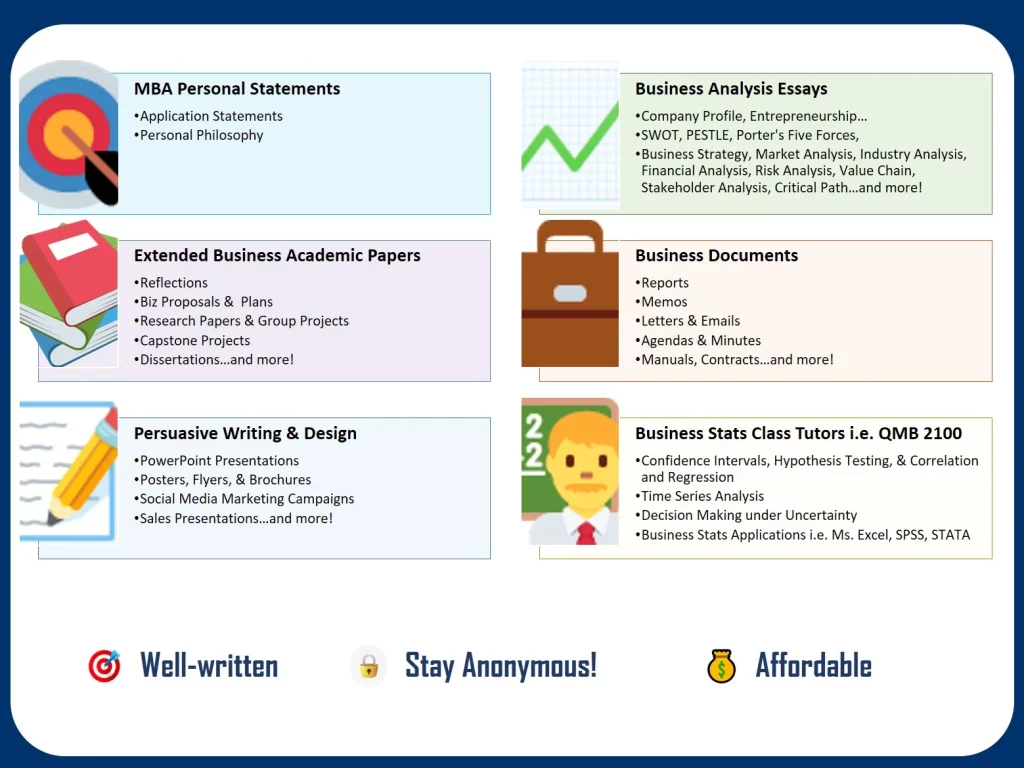Obtain a Quote and Place an Order Today!
What Will Your Custom-Written Business Assignment Include?
✍ Business Custom Writing & Online Class Tutoring Services
MBA Personal Statement Writing Help
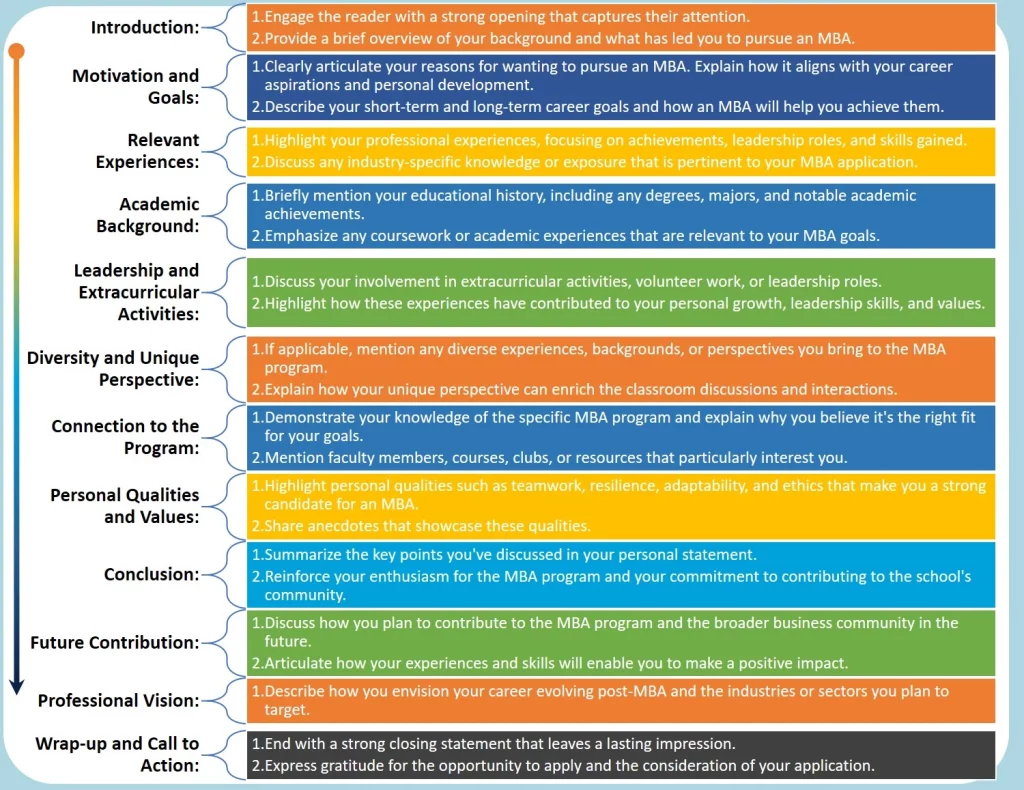
Key Characteristics of a Successful MBA Application Statement:
- Clear and Focused Introduction: Begin with a compelling opening that grabs the reader’s attention and introduces your main theme.
- Relevance to the Program: Highlight specific aspects of the MBA program that attracted you and explain why it’s the right fit for your goals.
- Personal and Professional Motivations: Articulate your reasons for pursuing an MBA, including how it aligns with your career goals and aspirations.
- Relevant Experiences: Discuss your academic, professional, and extracurricular experiences that demonstrate your readiness for an MBA.
- Specific Goals: Clearly outline your short-term and long-term career goals and explain how the MBA program will help you achieve them.
- Strengths and Attributes: Highlight your strengths, qualities, and skills that make you a valuable addition to the MBA cohort.
- Unique Contributions: Describe how your background, experiences, and perspectives will enrich the diversity of the MBA community.
- Evidence of Research: Show that you have researched the program and provide specific reasons for your interest in it.
- Reflective Insight: Share insights into how past experiences have shaped your goals and decisions.
- Positive Tone and Attitude: Convey enthusiasm, passion, and a genuine eagerness to contribute to the program.
- Coherent Structure: Organize your statement with a clear structure, including an introduction, body paragraphs, and conclusion.
- Clarity and Brevity: Use clear and concise language to convey your points effectively.
- Professional Language: Use professional language and maintain a tone that reflects your seriousness about your goals.
- Proofreading and Editing: Thoroughly proofread for grammar, spelling, and clarity to avoid errors.
- Avoid Clichés and Generic Statements: Avoid using generic phrases or clichés that don’t provide meaningful insights into your motivations.
- Honesty and Authenticity: Be genuine and authentic in your statements, avoiding exaggerations or insincerities.
- Alignment with Values: Showcase how your personal values align with the values of the MBA program and business school.
- Feedback from Others: Seek feedback from mentors, peers, or advisors to improve your statement before submission.
Overall, a successful MBA application statement showcases your unique qualities, experiences, and motivations in a way that resonates with the admissions committee. It’s your opportunity to demonstrate your potential as a future business leader and how you will contribute to the program’s learning community and beyond.
Business Analysis Essays Writing Help
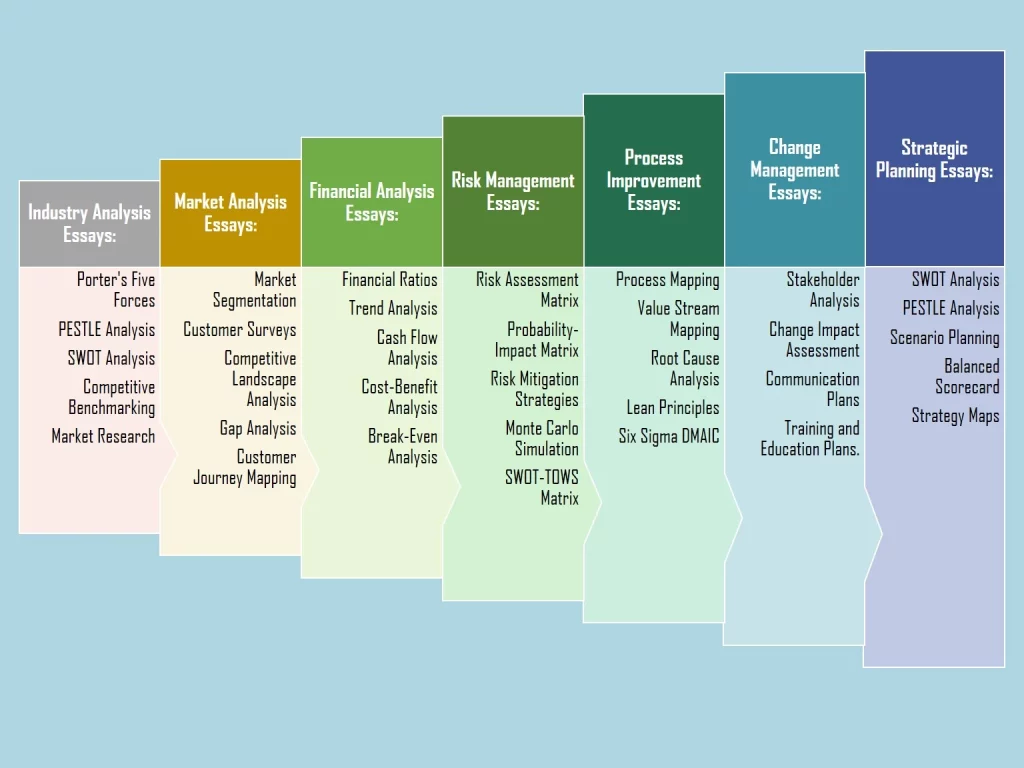
Here is a breakdown of what our expert business analysis essay tutors can help you with:
- Company Profile Essays: These essays provide a comprehensive overview of a specific company, including its history, mission, products or services, market presence, organizational structure, and key achievements. These essays give readers insights into the company’s identity and its position within the industry.
- SWOT Analysis Essays: These essays analyze a company’s strengths, weaknesses, opportunities, and threats. They evaluate internal factors (strengths and weaknesses) and external factors (opportunities and threats) to identify areas for improvement and strategic planning.
- PESTLE Analysis Essays: These essays examine the external macro-environmental factors that can impact a company or organization. PESTLE stands for Political, Economic, Social, Technological, Legal, and Environmental factors, and these essays analyze how these factors can influence business operations and decision-making.
- Porter’s Five Forces Essays: These essays assess the competitive landscape and industry dynamics. The 5 forces are: Threat of New Entrants, Bargaining Power of Suppliers, Bargaining Power of Buyers, Threat of Substitute Products or Services, and Intensity of Competitive Rivalry.
- Market Analysis Essays: These essays focus on assessing the market dynamics, trends, customer behavior, and competitive landscape. They provide insights into market opportunities, potential barriers, and strategies for market penetration.
- Financial Analysis Essays: These essays evaluate a company’s financial performance, profitability, liquidity, solvency, and efficiency through the examination of financial statements, ratios, and financial indicators.
- Industry Analysis Essays: These essays examine a specific industry’s structure, trends, growth potential, and competitive landscape. They help in understanding the industry’s dynamics and key players.
- Business Strategy Analysis Essays: These essays analyze a company’s strategic choices and decisions. They assess the alignment of the company’s strategies with its goals and market conditions.
- Organizational Culture Analysis Essays: These essays delve into a company’s culture, values, and norms that shape its work environment and influence employee behavior and performance.
- Leadership and Management Analysis Essays: These essays evaluate the leadership styles, management practices, and their impact on the organization’s success and employee engagement.
- Risk Analysis Essays: These essays identify potential risks and uncertainties that may affect a company’s operations and propose risk mitigation strategies.
- Supply Chain Analysis Essays: These essays examine the efficiency and effectiveness of a company’s supply chain, from sourcing raw materials to delivering the final product to customers.
- Innovation and Technology Analysis Essays: These essays explore the role of innovation and technology in a company’s competitiveness and growth prospects.
- Corporate Social Responsibility (CSR) Analysis Essays: These essays assess a company’s initiatives and activities related to social responsibility, environmental sustainability, and ethical practices.
- Business Ethics Analysis Essays: These essays evaluate ethical dilemmas in business contexts and propose ethical solutions to complex situations.
- Data Analysis Essays: These essays involve working with business-related data to conduct statistical analysis, interpret trends, and draw meaningful insights for decision-making.
Overall, business essays provide valuable insights and critical analysis to help organizations make informed decisions, improve their performance, and maintain a competitive edge in the market.
Extended Business Academic Papers Writing Help
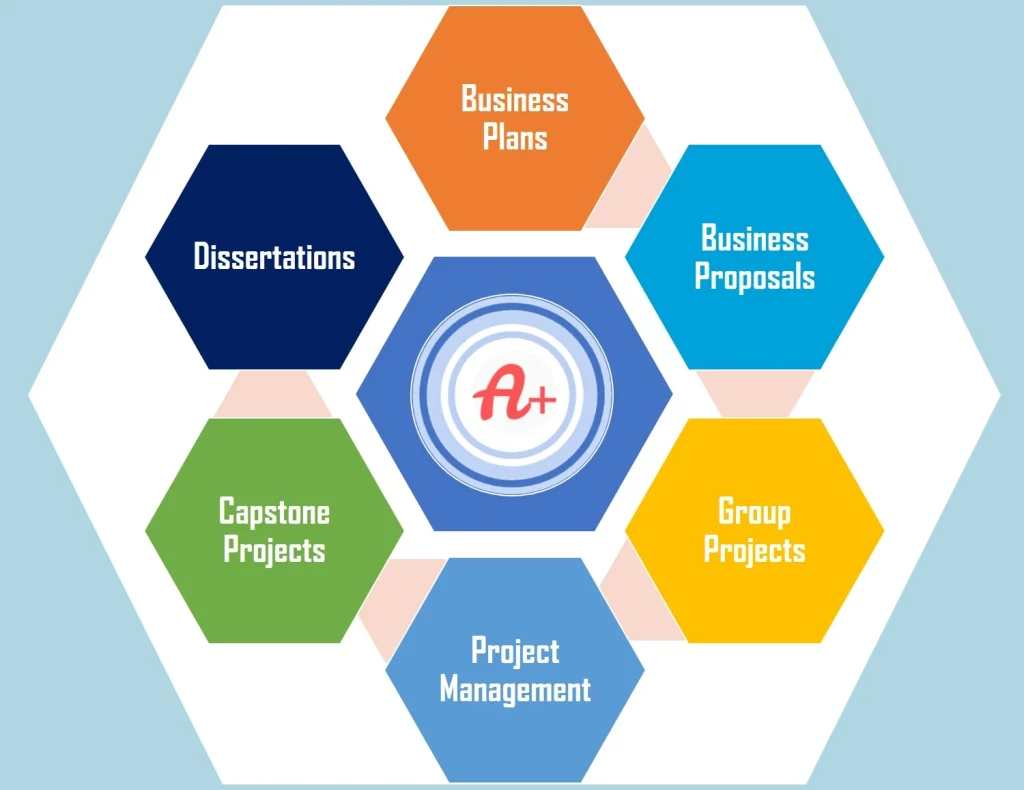
Here is a breakdown of what our expert extended business academic papers tutors can help you with:
- Reflections: In the business context, these papers may involve students or professionals reflecting on their learning experiences, personal growth, and insights gained during a business course or professional development program. They encourage self-assessment and critical thinking.
- Research Papers: These papers involve conducting extensive research on a specific topic or issue related to business. They require collecting and analyzing data, applying appropriate methodologies, and drawing evidence-based conclusions.
- Business Proposals: These are documents designed to persuade potential clients, investors, or partners to take specific actions, such as funding a project, supporting a business initiative, or entering into a partnership. Also review: grant proposals.
- Business Plans: These are comprehensive documents that outline a company’s goals, strategies, financial projections, marketing plans, and operational approaches. They serve as a roadmap for achieving business objectives. Also review: marketing plans.
- Group Projects: In business courses, these involve collaborative efforts by students to work on real-world scenarios, solve business challenges, and present their findings as a cohesive team.
- Project Management Papers: These papers focus on the planning, execution, and evaluation of business projects. They may cover project management methodologies, tools, and best practices.
- Capstone Projects: These are culminating academic experiences that require students to apply their cumulative knowledge and skills to address complex business problems or challenges.
- Dissertations: These are extensive scholarly papers typically required for advanced degrees in business studies. They involve original research, in-depth analysis, and significant contributions to the field of study.
Overall, extended business papers are essential for developing critical thinking, problem-solving, and research skills among students and professionals. They enable individuals to demonstrate their expertise and understanding of complex business concepts while providing valuable insights for decision-making and organizational improvement.
Business Documents Writing Help
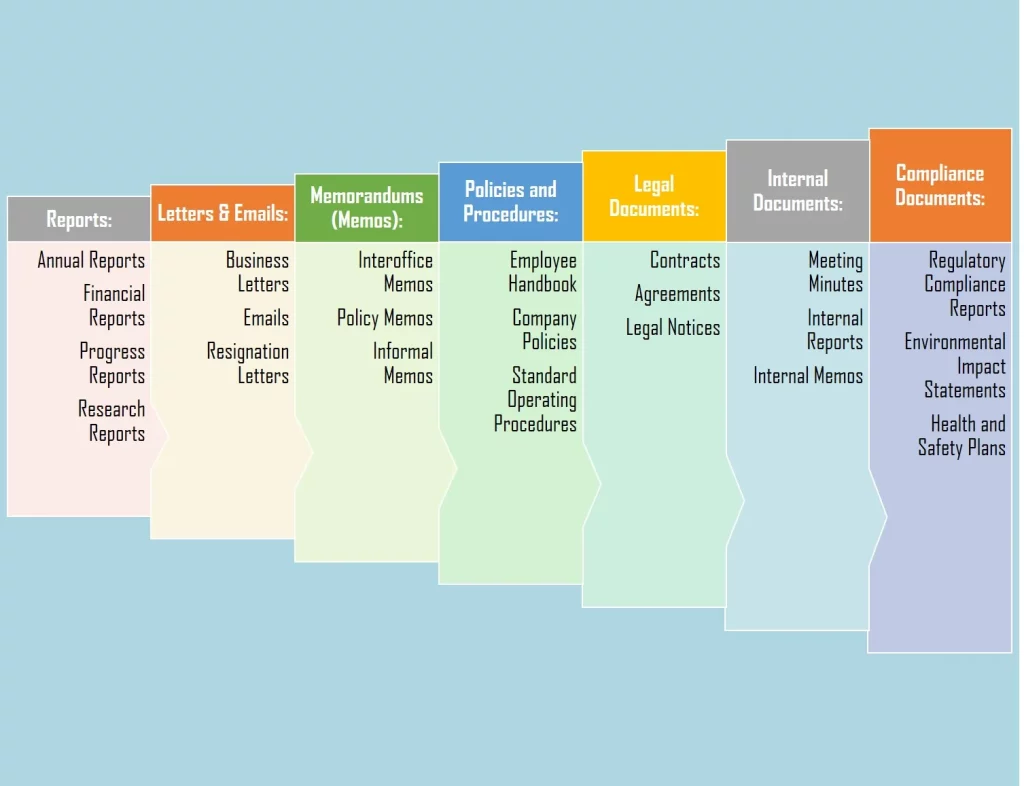
Here is a breakdown of what our expert business documents tutors can help you with:
- Business Reports: These involve writing comprehensive reports on specific business topics or projects, including market analysis, financial performance, business plans, or feasibility studies.
- Memos (Memorandums): Short, internal documents used for communicating within an organization. Memos typically address specific issues, provide updates, or request action from recipients.
- Business Letters: Formal written correspondence used for external communication with clients, partners, customers, or other organizations.
- Emails: Electronic messages used for various business purposes, including communication with colleagues, clients, or stakeholders.
- Proposals: Formal documents that outline solutions, projects, or business ideas and present them to potential clients, investors, or partners.
- Agendas: Documents that outline the schedule and topics of discussion for meetings or conferences.
- Minutes of Meetings: Written records of the discussions, decisions, and actions taken during business meetings.
- Policies and Procedures: Formal documents that outline the rules, guidelines, and processes that govern the organization’s operations and activities.
- Manuals and Guides: Documents that provide instructions and information on specific processes, tasks, or products within the organization.
- Contracts: Legally binding agreements between parties that outline the terms and conditions of a business arrangement.
Business documents are crucial for maintaining efficient and effective communication within organizations and establishing professional relationships with external stakeholders. They help ensure that information is conveyed accurately and consistently, facilitating smooth business operations and decision-making.
Persuasive Business Writing and Design Help
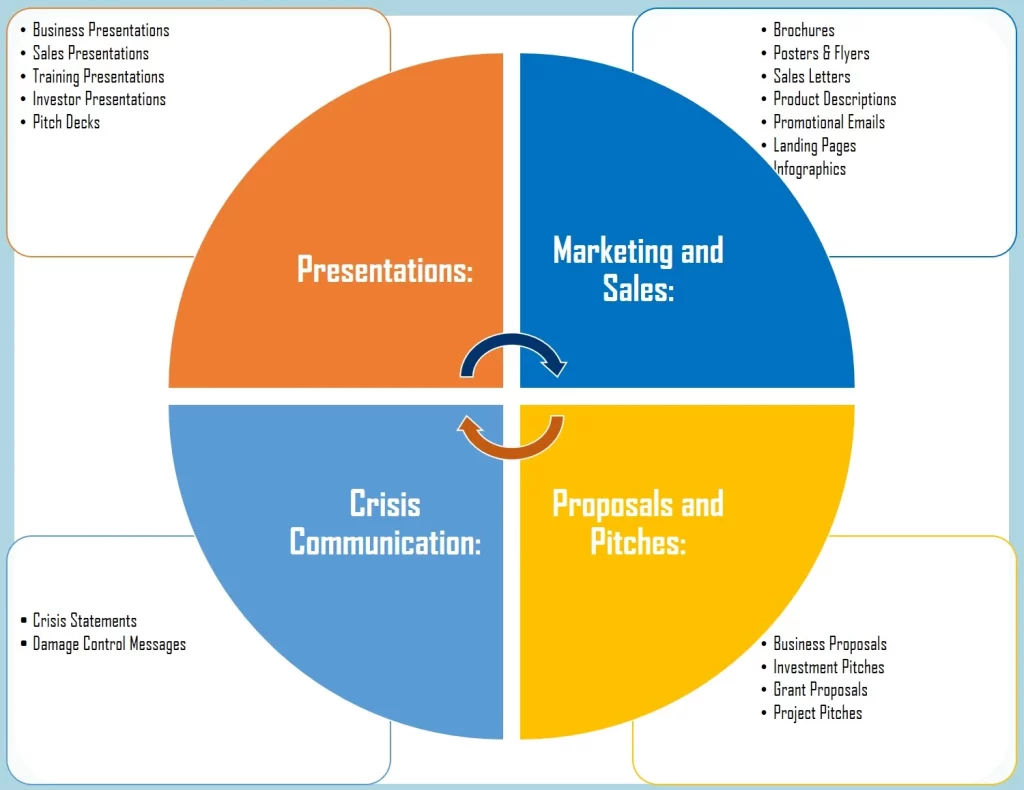
Here is a breakdown of what our expert persuasive business writing and design tutors can help you with:
- PowerPoint Presentations: Creating PowerPoint presentations on various business topics, including company analyses, marketing strategies, financial performance, or emerging business trends.
- Marketing Emails: Well-crafted emails that persuade recipients to take action, such as making a purchase, signing up for a newsletter, or attending an event.
- Sales Letters: Written communications designed to convince recipients to buy a product or service by emphasizing its unique selling points and benefits.
- Brochures: Printed materials that use compelling content and visual design to promote products, services, or events to a target audience.
- Flyers and Posters: Eye-catching designs with persuasive messaging used for advertising, promoting events, or announcing special offers.
- Social Media Campaigns: Engaging social media content designed to influence followers, create brand awareness, and encourage user engagement.
- Websites Articles: Persuasive and compelling content on business websites, guiding visitors to take desired actions, such as making a purchase or signing up for a subscription.
- Product Descriptions: Descriptive and persuasive content used to market and sell products on e-commerce platforms or retail websites.
- Video Marketing: Persuasive videos that use storytelling, testimonials, or demonstrations to persuade viewers to engage with a brand or purchase products.
- Social Proof: Incorporating customer reviews, testimonials, and success stories to persuade potential customers of the value and quality of products or services.
- Sales Presentations: Persuasive presentations designed to showcase products or services, highlighting their benefits and value proposition to potential clients or customers.
- Landing Pages: Web pages specifically designed to convert visitors into leads or customers through persuasive messaging and calls-to-action.
Effective persuasive business writing and design involve understanding the target audience, crafting a clear and compelling message, using persuasive language, and creating visually appealing content. The goal is to build trust, establish credibility, and convince the audience to take the desired action, ultimately driving business success and growth.
When designing persuasive business writings, you can opt to use any of these models:
- AIDA Model: It follows the AIDA (Attention, Interest, Desire, Action) model, guiding the reader from grabbing their attention to stimulating interest, creating desire, and finally prompting action.
- Problem-Solution Approach: It may adopt a problem-solution approach, highlighting the audience’s pain points and presenting the product or service as the solution.
Business Statistics Class Tutors
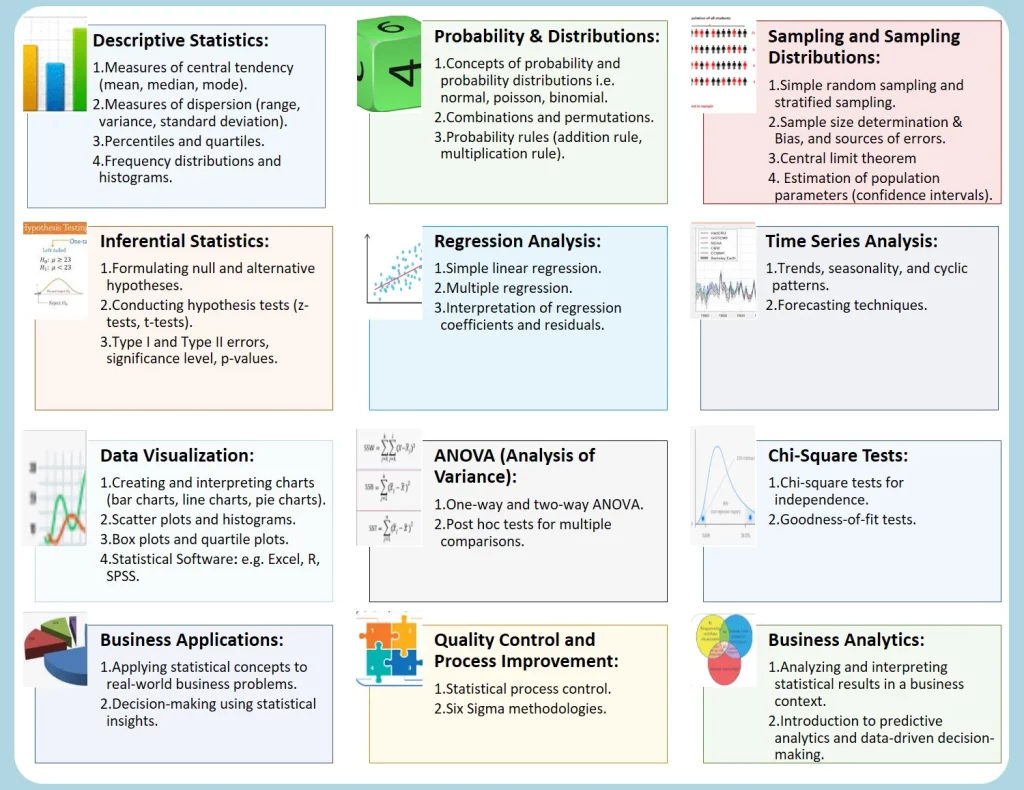
Here is a breakdown of some business stats classes our expert business tutors can help you with:
- Introduction to Business Statistics: A foundational course that covers basic statistical concepts and techniques relevant to business applications.
- Applied Business Statistics: Explores the practical application of statistical methods to real-world business scenarios, such as marketing, finance, and operations.
- Regression Analysis: Focuses on linear regression and other regression models used for predictive analysis in business.
- Data Analytics: Introduces data analytics concepts and techniques to extract valuable insights from business data.
- Business Forecasting: Covers methods for predicting future business trends and outcomes using historical data.
- Statistical Decision-Making: Explores the role of statistics in decision-making processes and managerial strategies.
- Sampling Techniques: Focuses on various sampling methods used in business research and market analysis.
- Quality Control and Six Sigma: Applies statistical techniques to monitor and improve product or service quality in business operations.
- Time Series Analysis: Analyzes time series data to identify trends, seasonality, and forecast future values.
- Experimental Design: Explores principles of experimental design and conducting experiments to test business hypotheses.
- Multivariate Data Analysis: Covers techniques for analyzing data with multiple variables, such as factor analysis and cluster analysis.
- Business Intelligence and Analytics: Introduces business intelligence tools and techniques for analyzing and visualizing data to support decision-making.
- Survey Research and Sampling: Focuses on designing and conducting surveys for market research and business insights.
- Statistical Software Applications: Offers hands-on training in using statistical software (e.g., Excel, ANOVA, GRETL, SPSS, SAS) to perform data analysis.
- Business Analytics Capstone: A culminating course where students apply statistical and analytical skills to real business problems or projects.
Overall, a business statistics class equips students with the knowledge and skills to analyze data, draw meaningful insights, and make informed decisions in various business scenarios. These assignments allow students to apply theoretical knowledge to practical scenarios, develop critical thinking skills, and gain a deeper understanding of the complexities and challenges within the business world. Additionally, they help students prepare for the demands and expectations of the business environment after graduation.

